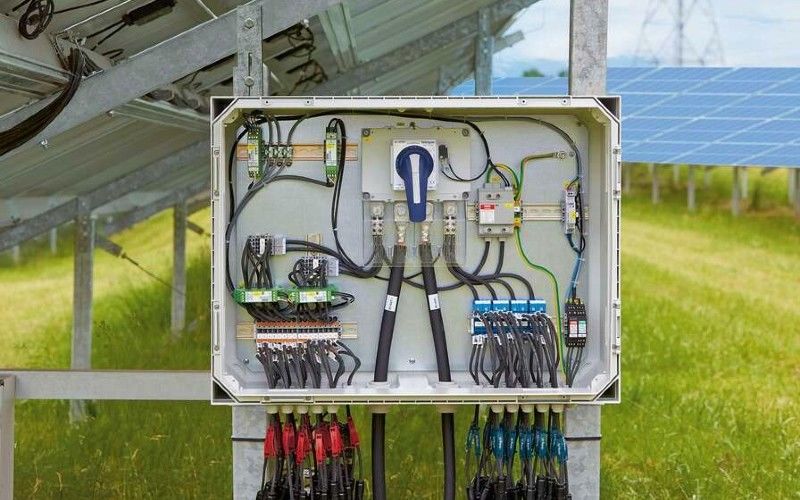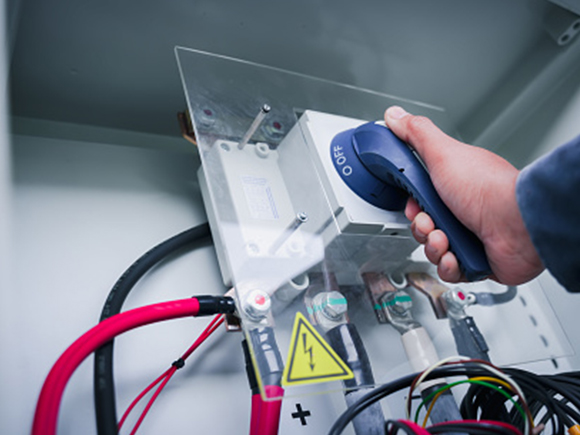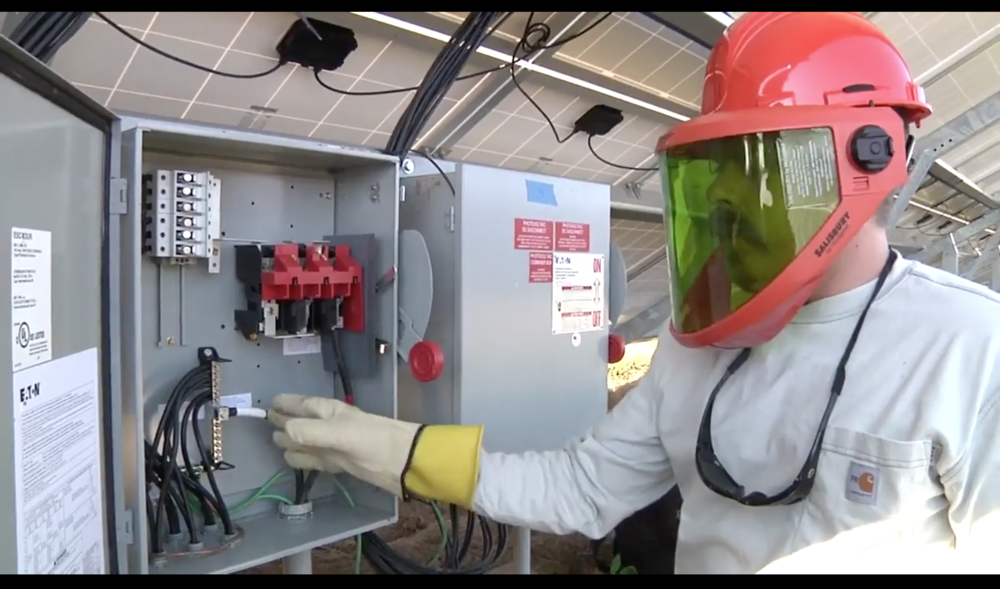Buying guide to solar combiner box: After carefully choosing solar panels, wiring, microinverters, analytical software, batteries, and storage, the last thing anyone wants to do is pick the wrong combiner box and damage the whole system.
When choosing a combiner box, it’s essential to consider the project’s type, size, and scope. What works in a home installation might not work in a business installation, and vice versa.
Once the location, other criteria, and the combiner’s relationship are all clear, it’s easy to choose the best combiner box for the job. Because of this, we’ll talk about the best solar combiner boxes in this article.
HOW DOES A SOLAR COMBINER BOX WORK?
The electricity from many solar panels is brought to the combiner box. Each string conductor is connected to a fuse terminal, and the output from all fused inputs is sent from the box to the inverter on a single cable. Even though it is the most basic design for a combiner box, it will probably have a few extra bells and whistles when added to your solar power system. Disconnect switches, monitoring tools, and fast-shutdown devices can be turned off from a distance.
The enclosure is like an electrical junction box, which is used to connect multiple wires and cables at different points of entry. It connects the inverter to the many strings of PV modules by combining their outputs. This is often used to store fuses that protect the inputs from too much current for more than one string. It could be anywhere from three to fifty-two.
A solar combiner box may have hardware for string monitoring, surge protection, and DC disconnects as well as string monitoring, surge protection, and DC disconnects. Before choosing a solar combiner box, it’s essential to know where the job will be done and how hard it will be. You should also know about the other parts and how they work with the combiner.
AC VS DC COMBINER BOXES
What Is a DC Combiner Box?
Most ground-mounted solar power plants put the inverters in the middle of the PV module array and the DC combiner boxes in different places around the array. This lets us make the most of the high efficiency of our inverters while minimizing power loss on the AC side and shortening the cords that connect the inverters to the transformer. This design makes it possible to eliminate AC lines on commercial and industrial PV systems on roofs.
The buying guide to solar combiner boxes tells us that, with so many configuration options, the combiner boxes can be set up to meet the user’s needs or the environment’s installation standards. Features like detecting arc faults, shutting down quickly, and disabling the system remotely with a “fireman’s switch” are easy to set up. DC combiners are especially helpful for people who use bifacial PV modules because they let the user install fuses with at least 25 amps to handle the higher currents.
What is an AC Combiner Box?
In photovoltaics, or PV, two of the most important things are how reliable, and available solar systems are. When using string inverters, Moscoow’s AC combiner boxes offer the highest level of safety against short circuits and high voltage. Also, each string inverter can be easily disconnected from the network if it needs to be fixed.
You can store anywhere from two to six-string inverters in a single space with a combination box. They can stand up to the weather and meet market standards set by IEC 61439-2 ed. 3.0:2020. They can handle temperatures between -20 and +50 degrees Celsius.
For the AC side of solar PV systems, there are combiner boxes for 230V-400V, 690V, and even 800VAC. An AC distribution box changes energy from different sources and sends it to different places. Even though they are not required, we recommend adding a backup AC MCCB or disconnect switch with an NH00 fuse.
What’s the difference between a DC combiner box and an AC combiner box?
DC and AC combiner boxes need to be able to turn off the power. Using AC circuit breakers instead of DC circuit breakers or a mix of the two is one of the main reasons why cross-level misoperation protection is needed.
Because AC and DC circuit breakers use different ways to stop arcing and put out arcs, even breakers with the same rating can’t turn the DC power supply on and off.
AC has a zero-crossing point at the beginning of each cycle, which makes it hard to put out an arc. On the other hand, DC doesn’t have a zero-crossing point, so it needs a second device to put out an arc. With direct current, it’s hard to make an arc, but it’s easy with alternating current and no overshoot.
For AC and DC systems, you need two different kinds of circuit breakers. Here are the things that are different:
There are three primary AC contacts and two main DC connectors.
Arc-suppressing devices are used in both direct current (DC) and alternating current (AC) electrical appliances. Those used for the primary contact of DC appliances are of the magnetic blowing type, while those used for the primary contact of AC appliances are of the grid type.
An AC open should not be used carelessly for a DC event because a short circuit is more likely to make more vital sparks, but a DC open of the same grade can usually be used briefly for an AC event. When an AC circuit breaker is missing, a DC circuit breaker can be used as a temporary fix. However, this solution should not be used permanently because of the high DC kairos ability requirement.
Three changes must be made when AC circuit breakers are changed to protect DC circuits.
Protection against too much load
Bimetallic parts activated by heat are used to prevent overloads with a long delay. Since the root-mean-square (RMS) value of the AC is the same as the average value of the DC, there is no need to change anything. I2R is what makes things happen. But since the transformer can’t heat the DC, the secondary side of the current transformer isn’t used for high-current standards.
For example, if the overload long-delay release is hydraulic (oil-cup type), the minimum action current must be more than 110% to 140% of the rated current for the AC complete electromagnetic release to work in a DC circuit (if it is to be used, it will have to be redesigned).
A way to prevent short circuits
After the filtered rectifier circuit (DC), a magnet system prevents short circuits in hot-electromagnetic AC circuit breakers. This increases the initial AC set current by a factor of 1.3. Thermal-active electromagnetic protection prevents all short circuits caused by electromagnetic fields.
Attachments for circuit breakers include shunt releases, Undervoltage releases, devices run by electricity, and so on. Voltage coils like shunts and under voltages can be used with alternating current (AC) and direct current (DC) systems as long as the voltage is the same. In both AC and DC systems, alarms and extra connections are often used. When the electric mechanism of DC is used, it needs to be redesigned.
Wiring
Because arc extinguishing is tricky because there aren’t many features above zero, DC short-circuit current (or even a small multiple of the fault current) on and off, the wiring should have two or three poles in series, increasing the fracture so that the fracture carries some of the arc energy.
Why do we need safes and locks with combinations?
- It’s like a junction box, an electrical box with several ports that can connect several cables and wires safely.
- The input overcurrent protection fuse is often stored in many strings. It could have as few as three strings or as many as 52. A solar combiner box might have extra parts like hardware for monitoring the strings, surge protection, and DC disconnects.
- You should also know a lot about the other parts of the combiner and how they work together.
- The number of cords going to the inverter may be cut down by solar combiner boxes, which could save money.
- The combiner box cuts down on the number of wires that need to be connected to the fuse terminals and makes it easy to find and keep track of the ones that do.
- If there is a voltage spike, this function shuts off the power immediately.
The answer is not easy to find. Changes happen:
- When the solar panels are in more than three rows.
- The safety features of the inverter may need to be improved.
- To turn off the power immediately if the supply suddenly changes.
- All that is needed is to understand how complicated the network is and take the proper steps. Using an electric, solar combiner box has a lot of good points.
Even though it is small and easy to use, a solar combiner box is an essential part of a solar system. They keep the wires organized, which means less power is lost between the solar panels and the inverter. When maintenance is needed, it’s easy to take the solar combiner box off and put it back on.
- A solar combiner box makes maintenance easier and saves energy by cutting down on the number of cables going to the inverter. The extra security that a solar combiner box gives may be the most crucial benefit.
- The solar combiner box may protect the inverter from high power and current that could damage it. If the inverter senses too much power, it will turn off the power supply. With this method, users may be able to save money and make their current inverters last longer.
- You don’t need any special tools to put in a solar combiner box, and it may last many years without needing to be changed.
Buying Guide To Solar Combiner Box
Buying a guide to solar combiner boxes is the key. In this post, we’ll talk about what to look for in a solar combiner box.
Getting more work done
Spending money over and over on the same tool is a pain. Remember that you should never give in to pressure about price and give up on quality. You might be curious about the reason(s). The main goal is to ensure the instrument can be used for a long time. If your package isn’t good enough, you won’t be able to sell it.
Protection
There must be safety features in the solar combiner box. Perhaps you’ve seen it in print. Okay, but from what exactly do we need to be safe? The answer is easy to figure out. Protection against voltage and lightning surges must be in place and work with the system. A perfect box would have several DC circuit breakers equal to the number of string modules and a DC fuse for quick power shutoff.
You have to ensure that the things you choose don’t break any rules in the area. The 2011 standard says that the disconnecting combiner for the roof mount can’t be more than six feet from the array. A few problems need to be fixed quickly.
The term “arc fault” refers to a high-power electrical discharge between two conductors and creates a lot of heat. The insulation between the wires breaks down because of this. If you use an excellent combiner box, your solar panels will be safe.
Put together with little work.
Putting in the solar combiner box is a big problem. A lot of us have never even seen an electrical device. The combiner box is easy to set up and will help us reach our primary goal, which is to ensure everyone is safe. So, it would be best if you looked for a plug-and-play box with all the features you want already built in.
Adaptable
This is a small problem. For example, the atmosphere at home and work couldn’t be more different. Because of this, a suitable combiner box can be changed to meet the situation’s needs. Take hot weather as an example. Use this method to find a container that will work for your needs.
Affordable
Every customer wants to spend less money on average. It’s hard to tell without comparing more than one thing. Make a list of the things you want to find before you start your search in the combiner box. You should start shopping around for the best deal if it has everything you need.
Necessity
Depending on the materials, there may be some places where everything can be connected without a combiner. The Big Lead Assembly, or BLA, the harness is thick enough to stop the voltage current from arcing without a combiner.
You might not need to buy a solar combiner box if you only want to install two or three solar panels. But maybe it would be better to tie the rope to the transformer. Combiner boxes can be beneficial for big projects with more than 4000 strings. In industrial settings, different-sized boxes are used to get energy from buildings that are in awkward places. They help utility-scale project site planners get the most power out of their projects with the least resources.
Management
The designers made the wireless monitoring gear that is in the combiner box. This makes it possible to monitor voltage, current, and temperature at the string and panel levels. In addition to the benefits available during setup, real-time feedback from monitoring may be helpful for field assignments. With this method, problems and flaws can be found before they do a lot of damage.
The buying guide to solar combiner box needs to be in good advice. When deciding how often to do maintenance, it’s essential to consider the environment and how it is usually used. If you install your solar combiner box correctly, it should last as long as your project does. However, you should still check for leaks and loose connections regularly.
Since it is the first piece of equipment affecting the solar module’s output, the combiner box’s quality is probably the essential. Compared to other parts of a solar project, combiner boxes are very cheap. Think about how likely a broken unit will cause a sudden failure with smoke and fire.
A new thing that has been added is a whip. You can find a wire at the far end of the solar connection. The makers secure the whips, which lets the installer connect the output wires with a solar connection. The contractor will have to go out and buy some parts or drill some holes.
Operation
The price and availability of the solar combiner box may affect your choice. There are ready-made alternatives in various shapes and sizes for residential installations, so changes that would take a lot of time and money don’t have to be made.
Depending on the parts of your system, the combiner box may need to do more than combine fuses and circuits. Some companies might not always have the best combiner box for every situation. Do you want to be flexible and straightforward? Let’s say that two different solar arrays connect to the same box and send electricity to their controllers in opposite directions. Only a few boxes will work right out of the box to solve this problem. The rest will need to be tweaked.
In buying a guide to a solar combiner box, it’s essential to know what kind of inverter is used. It would be best if you chose only code-compliant combiner options, such as traditional string inverters and transformer-less systems with maximum power point tracking, from the many available (MPPT).
Which parts of a solar combiner box are most important to you?
The price and availability of your chosen combiner box may be essential factors. There are pre-packaged systems that can be used in various home settings and don’t need to be customized, which can be expensive and take a lot of time.
Because of the different ways panels can be set up, the combiner may need to do more than combine circuits and fuses. This will depend on the rest of the system. Unfortunately, not all manufacturers make a perfect combiner box that works everywhere.
Do you want something complex or something that can change? Think about two completely different solar power systems that plug into the same box but send signals to different controllers. Some boxes are made in heaven to do this, while others might take a little more work.
Parallel strings to a combiner
Installers are used just to ground all inverters and connect parallel strings to a combiner before connecting them to the inverter. Installers can now use inverters that don’t need a transformer but aren’t grounded and need a negative fuse. Because the design is getting more complicated, a combiner box is needed to connect all parts.
If that is right, it shows explicit parallelism. If the device doesn’t have a transformer, you’ll have to connect the opposing ends and give them a way to come apart. The size of the inverter is also essential. For the current crop of inverters, you need a combiner that can handle at least 1,000 volts.
It’s important to note that different combiners can do many different things. For example, Moscoow’s product line may do a straight parallel followed by a shootout to two different inverters, all in the same way. Also, the same box can fuse up to four negatives and four positives without a transformer.
How much do sun energy combiners cost?
In general, solar combiner boxes cost between $100 and $300. The best solar combiner boxes can be bought for between $175 and $300. It may seem like a significant investment initially, but it is essential for large solar systems and helps with smaller ones.
The money you save on your monthly energy bills could easily cover the cost of the solar combiner box. If you connect your solar panels to an inverter, you will get less power from them than if you connect them directly to a power source. By saving money on your monthly power bill, installing a solar combiner box will quickly pay for itself.
CONCLUSION
Solar energy is now used all over the world. Still, the idea is being used more and more worldwide to get the most out of renewable energy sources like solar energy. The ultimate buying guide to solar combiner boxes can make your solar system more efficient and protect the inverter from too much voltage or current.
Also, your safety is in danger. What if, say, the amount of power used goes up? Moscoow’s solar combiner box allows us to get things done. Moscow makes high-quality products that you can count on.




